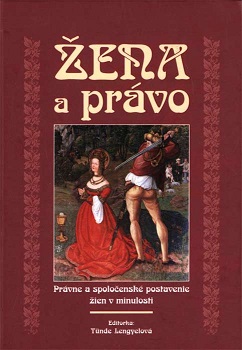Kriminalita žien v poľských mestách v 16.-17. storočí
Female criminality in the polish towns in the 16th ~ 17th Centuries
Author(s): Andrzej Karpiński
Subject(s): Gender Studies, History of Law, Criminal Law, Modern Age, Culture and social structure , 16th Century, 17th Century
Published by: SAV - Slovenská akadémia vied - Historický ústav SAV
Keywords: Poland; women; crime; criminal law; witchcraft; prostitution; 16th century; 17th century;
Summary/Abstract: The paper tries to estimate a women's share of criminality in Poiand and their position in the world of professional criminals. The author focuses on the big cities of the Polish kingdom: Krakow, Poznan, Lwow, Gdansk, Lublin and Warsaw. The paper is divided into several parts that deal with various specific types of crime. Rather unusual crime category for women was the one where crimes such as conspiracy, rebellion and treason were included. Violation of regulations was more frequent. Robbing corpses that were victims of epidemics were usual charges brought against women. Women were also members of vagrant and beggar groups, which participated in various street-disturbances and misdemeanours. In the category of religious misdemeanours, women were found guilty mainly of prohibited activities such as witchcraft and magic. It was in the end of the 17th and the first half of the 18th centuries that Poland was most affected with the prosecution of witches. There were 115 women under the investigation and 78 out of them were taken to court during 150 years in the abovementioned cities. Murders committed by women were rare. Research has shown that only 40 women were charged with murder in these five big Polish cities from the end of the 16th until the 18th century. The city of Gdansk is a special case, because women formed as many as 40 % of all the murderers. Murder was punished by capital punishment without exception. On the other hand, women predominated in cases of infanticide. Among offences against marriage, we can find prostitution, procuration, adultery and bigamy. Women, especially prostitutes, were often accused of several offences simultaneously. Prostitutes came from various social strata. About 20 % of them came to a city from the countryside, the others came from artisan urban families. Exceptionally, even noble women who were hard up tried to earn some extra money by prostituting. Prostitutes were predominantly single women. Ten percent of prostitutes operated in brothels that were run by executioners. Official brothels in charge of executioners could be found almost in all the above-mentioned cities. The employees of the brothel were usually some shady prostitutes who came under surveillance of a town executioner following their public punishment. It was on the peripheries of a city that illegal brothels run by procurers and procuresses were to be found. Town magistrates knew about them, but tolerated their activities. A brothel of such kind employed about 3-5 prostitutes, sometimes as many as 10. However, among places were prostitutes operated were also public houses, inns, public baths, flats of clients and rented rooms. Street prostitutes represented the lowest rank of the hierarchy and offered their services in bushes or directly in the street. Again, it was women who dominated in the procuration business. Over 70 % of the accused of adultery were married women, who abandoned their husbands and lived in an illicet relationship. Thefts formed majority of town courts agenda. Majority of female thieves were artisans' daughters. Apart from them, there were daily labourers, peasants from nearby villages and wives and daughters of city servants for whom stealing was a chance to improve their circumstances. The main object of interest for female thieves were buildings and rent house, but also streets and market areas. Street thieves were usually specialised, some were shoplifters stealing from small stalls, other were pickpockets and cutpurses. Thefts occurred also in winebars, inns, churches and brothels. Many women were involved in theft-boot, handling stolen goods and profiteering. The age, family status, long time contact with a city and contacts to the underworld were other important determinants of criminal activities of women. It was not only young single girls from the poor families, who commited crimes, but also married women with children, for whom these activities formed additional income.
Book: Žena a právo. Právne a spoločenské postavenie žien v minulosti
- Page Range: 86-105
- Page Count: 20
- Publication Year: 2004
- Language: Slovak
- Content File-PDF

